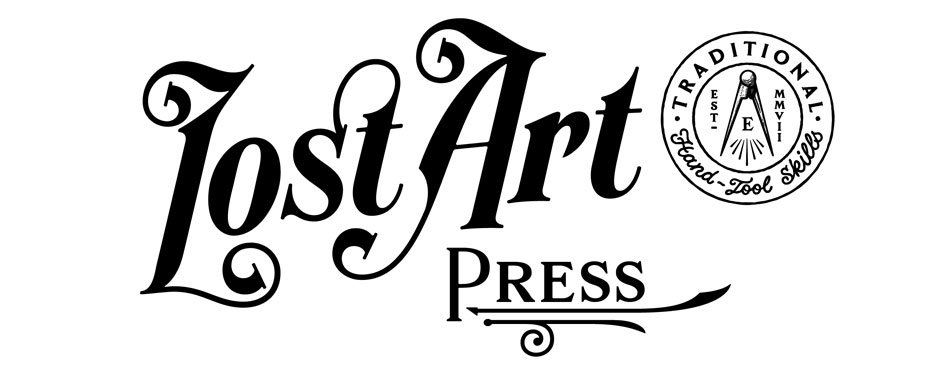This is an excerpt from “With all the Precision Possible: Roubo on Furniture” by André-Jacob Roubo; translation by Donald C. Williams, Michele Pietryka-Pagán & Philippe Lafargue.
Once the mouldings are cut, you finish them, that is to say, you shape them on edge and you round off the talons/fillets and the beads. (In workman’s terms, it is called relieving the mouldings.) The tools appropriate for this use are the moulding planes for cutting beads, the moulding planes to make V-shaped grooves, moulding planes for beads of all sizes, duck beak [bec-de-cane is a plane whose blade is the shape of the top of a walking stick or door handle rather than a reference to an animal (duck)] and gorge fouille [a plane similar to the bec-de-cane with the extremity of its iron curved and rounded with a fillet or tip at its end so this plane makes round cuts and fillets], or furrowed gouges.
The moulding planes for cutting beads do not differ from other moulding planes, except that they have a cheek [guiding ledge/ridge/shoulder] just like the other moulding planes that I already spoke of. The other moulding planes, as well as the round planes [as in hollows-and-rounds], do not have one.
The duck beaks [see comment above] are tools which serve to dig out the bottom of the hollow/ ogees or beads where the moulding planes [ for cutting beads] cannot get in, as in the case of a ravalement [this refers to an area where one lowers the surface of the wood in an area to accentuate adjacent areas, or to accomplish the same effect through undercutting] or a groove. They differ from other planes in that they cut horizontally [on their sides] instead of the others that cut straight [down]. Their iron [blade] is placed upright in its throat or at least with very little angle (there are even many which are not angled at all). The angle of this iron [skew] is only on its width, that is to say, on the thickness of the tool, behind which it is empty. That is why this slope [skew angle] is made inside, not only to make the shavings eject, but also to make itself open to the iron [give a cutting angle or pitch to the blade/iron].
Since the point of the duck beak [see other description above] is very thin, the wood of their body [of the blade tip] can hardly survive very long. That is why it is highly advisable to make soles of copper or iron, which is even better, just as I said elsewhere. Look at Figs. 1, 2, 3, 4, 5, 6 & 7, which represent a duck beak viewed in all directions, as well as its iron and its wedge.
The gorge fouille [literally furrowed gouges] are types of duck beaks which do not differ from the former except their end is rounded in the form of a gouge, and it is squared up [the blade edge is configured more like a scraper than an edge tool]. The iron of these tools is not found ready-made at the Merchants, at least not normally. That is why woodworkers make them themselves.
Their use is to dig [out] bottoms [hollows] of ogee shapes, [and] to enlarge and finish the bottom of grooves, see Figs. 8, 9, 10 & 11. When it is [used on] frames with bevels or chamfers rounded with a fillet or tip at [the] end, one makes use of an ordinary grooving plane that is used on the edge of the frame, noting only to make it void on the inside.
There is still another tool where the iron is placed upright and which cuts horizontally which is called a side rabbet plane. Its use is to enlarge the grooves and to re-cut those that were badly made, see Figs. 12, 13, 14 & 15.
When the panels are dry, that is to say, the glue has set well, you set their length and width as needed, which in workman’s terms, is called squaring up the panels. You then produce the raised panel, which is made with a tool called a fielding or raising plane, which is similar to other rabbet planes, with the exception that they have a fence [and] that the slant of the mouth is skewed within the inside over the width of the iron, to make it more appropriate for cutting the end [grain] wood and [working] cross-grain. There are two irons on this tool, one that is in the form that we call flatbanded [making a bevel or chamfer], and the other in the shape of a square called a nicker. The two together are about 14–16 lines wide. On top of this plane and toward the front is a notch similar to that of the bench fillister, which serves to support the hand of whoever is pushing it, see Fig. 16.
— MB

















